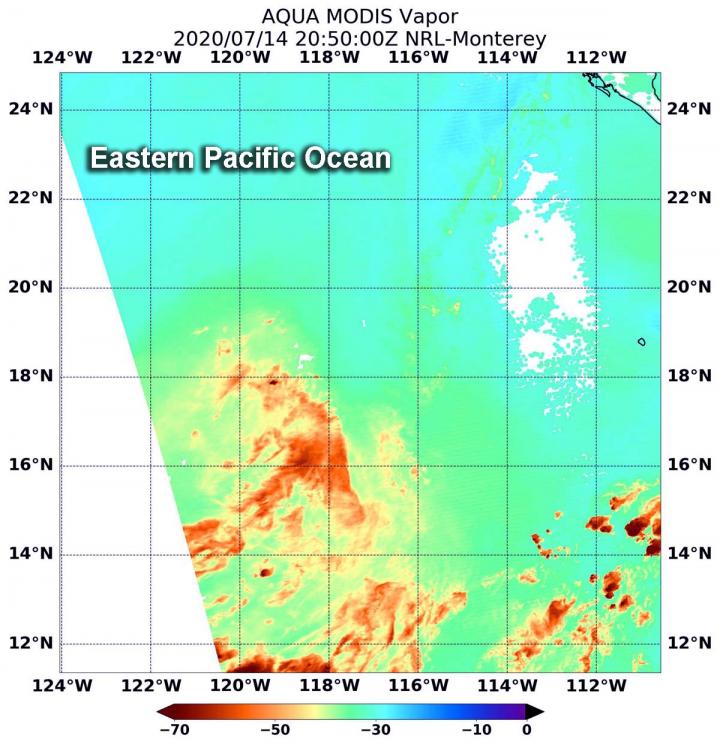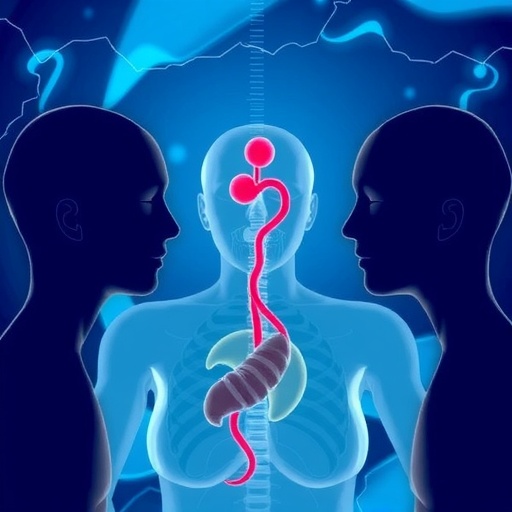
Credit: Credits: NASA/NRL
When NASA’s Aqua satellite passed over the Eastern Pacific Ocean, it gathered water vapor data on Tropical Depression 06E that showed it had opened up into a trough. A trough is an elongated area of low pressure.
On July 14 at 4:50 p.m. EDT (2050 UTC), NASA’s Aqua satellite passed over the remnants of Tropical Depression 06E. The Moderate Resolution Imaging Spectroradiometer or MODIS instrument aboard Aqua gathered the water vapor content and temperature information. MODIS found minimal concentrations of water vapor and the circulation had opened up into a trough.
Water vapor analysis of tropical cyclones tells forecasters how much potential a storm has to develop. Water vapor releases latent heat as it condenses into liquid. That liquid becomes clouds and thunderstorms that make up a tropical cyclone. Temperature is important when trying to understand how strong storms can be. The higher the cloud tops, the colder and stronger the storms. TD6E showed very limited water vapor.
At 5 p.m. EDT on July 14, the National Hurricane Center (NHC) said a satellite overpass “indicated that the circulation of the tropical depression was no longer closed with light and variable winds evident on its south side. Therefore, the system no longer meets the criteria of a tropical cyclone.”
At 5 p.m. EDT (2100 UTC) on July 14, NHC issued their final advisory on Tropical Depression 06E. At that time, the remnants of 06E were located near latitude 18.2 degrees north and longitude 118.0 degrees west, about 615 miles (990 km) west-southwest of the southern tip of Baja California, Mexico. The remnants were moving toward the west near 17 mph (28 kph). Maximum sustained winds were near 30 mph (45 kph) and waning. The estimated minimum central pressure is 1008 millibars.
The remnants were producing a very limited amount of shower activity. The NHC said that associated convection could pulse up and down for another day until the trough moves over cooler waters.
NASA’s Aqua satellite is one in a fleet of NASA satellites that provide data for hurricane research.
Tropical cyclones/hurricanes are the most powerful weather events on Earth. NASA’s expertise in space and scientific exploration contributes to essential services provided to the American people by other federal agencies, such as hurricane weather forecasting.
###
By Rob Gutro
NASA’s Goddard Space Flight Center
Media Contact
Rob Gutro
[email protected]
Original Source
https:/




